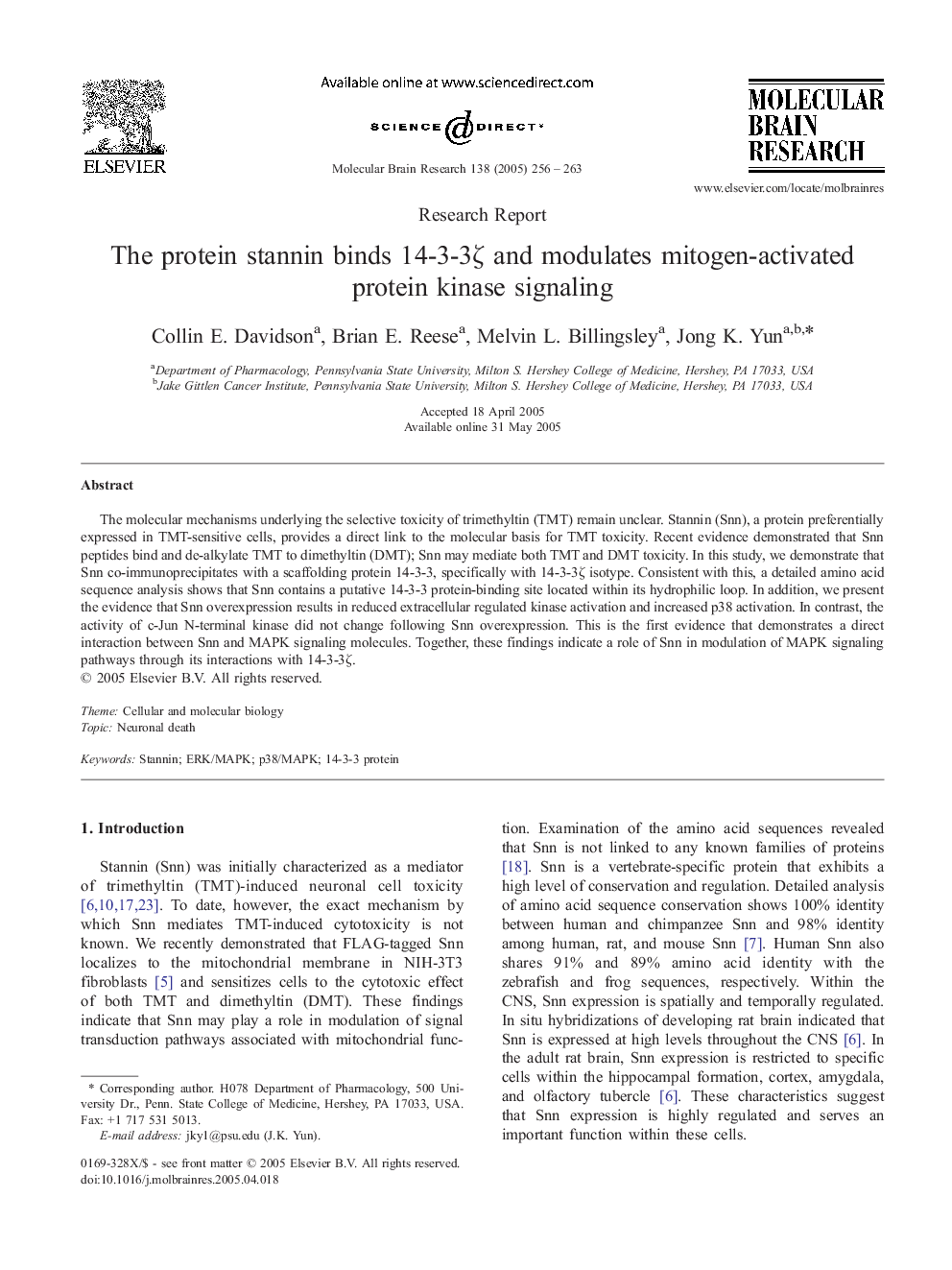| Article ID | Journal | Published Year | Pages | File Type |
|---|---|---|---|---|
| 9410832 | Molecular Brain Research | 2005 | 8 Pages |
Abstract
The molecular mechanisms underlying the selective toxicity of trimethyltin (TMT) remain unclear. Stannin (Snn), a protein preferentially expressed in TMT-sensitive cells, provides a direct link to the molecular basis for TMT toxicity. Recent evidence demonstrated that Snn peptides bind and de-alkylate TMT to dimethyltin (DMT); Snn may mediate both TMT and DMT toxicity. In this study, we demonstrate that Snn co-immunoprecipitates with a scaffolding protein 14-3-3, specifically with 14-3-3ζ isotype. Consistent with this, a detailed amino acid sequence analysis shows that Snn contains a putative 14-3-3 protein-binding site located within its hydrophilic loop. In addition, we present the evidence that Snn overexpression results in reduced extracellular regulated kinase activation and increased p38 activation. In contrast, the activity of c-Jun N-terminal kinase did not change following Snn overexpression. This is the first evidence that demonstrates a direct interaction between Snn and MAPK signaling molecules. Together, these findings indicate a role of Snn in modulation of MAPK signaling pathways through its interactions with 14-3-3ζ.
Related Topics
Life Sciences
Neuroscience
Cellular and Molecular Neuroscience
Authors
Collin E. Davidson, Brian E. Reese, Melvin L. Billingsley, Jong K. Yun,
